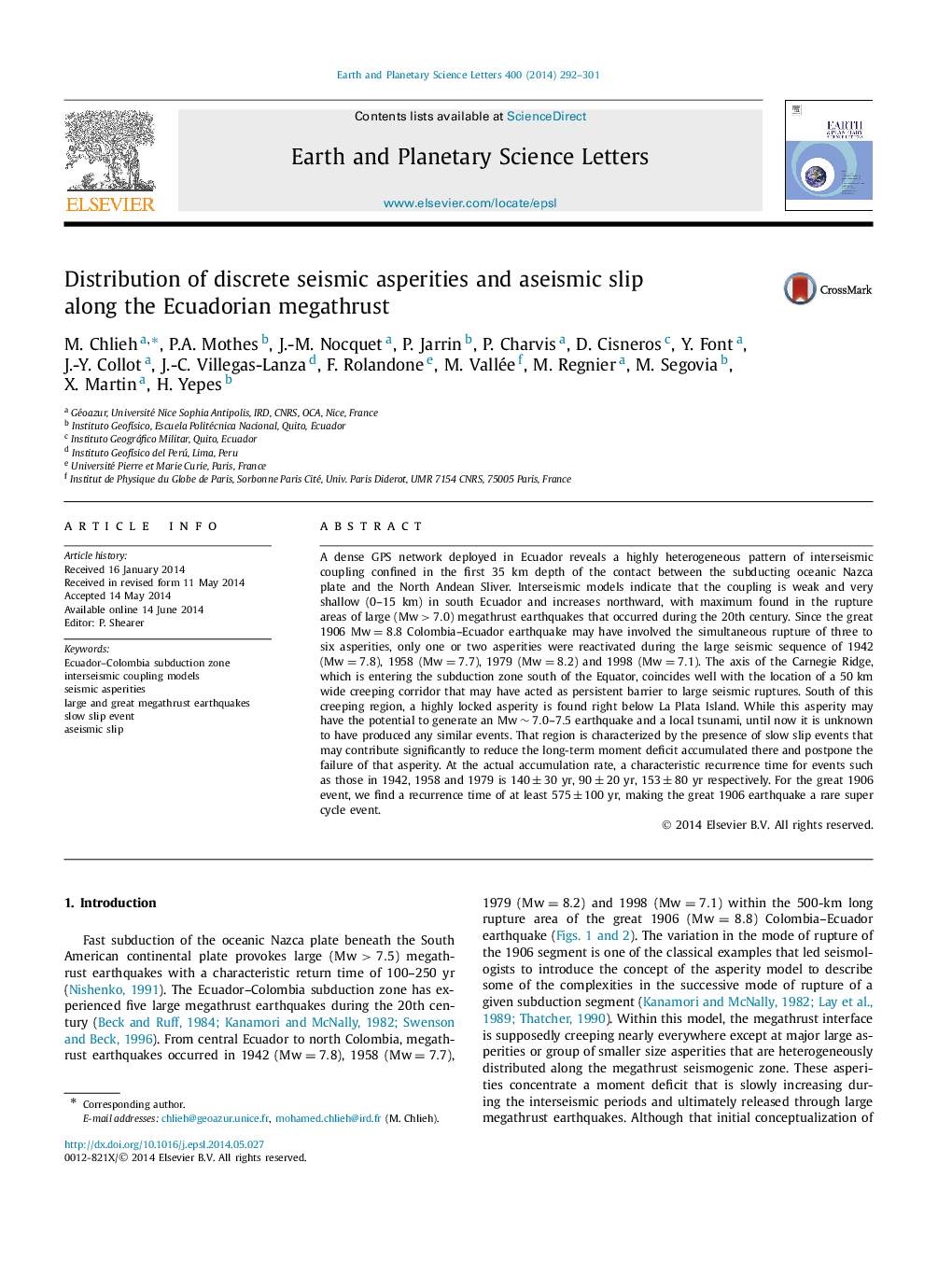| کد مقاله | کد نشریه | سال انتشار | مقاله انگلیسی | نسخه تمام متن |
|---|---|---|---|---|
| 6428798 | 1634756 | 2014 | 10 صفحه PDF | دانلود رایگان |
- We model heterogeneous interseismic coupling along the Ecuadorian subduction zone.
- The ruptures of large megathrust earthquakes correlate with discrete locked asperities.
- Subduction of geomorphologic features promotes creeping on the megathrust interface.
A dense GPS network deployed in Ecuador reveals a highly heterogeneous pattern of interseismic coupling confined in the first 35 km depth of the contact between the subducting oceanic Nazca plate and the North Andean Sliver. Interseismic models indicate that the coupling is weak and very shallow (0-15 km) in south Ecuador and increases northward, with maximum found in the rupture areas of large (Mw>7.0) megathrust earthquakes that occurred during the 20th century. Since the great 1906 Mw=8.8 Colombia-Ecuador earthquake may have involved the simultaneous rupture of three to six asperities, only one or two asperities were reactivated during the large seismic sequence of 1942 (Mw=7.8), 1958 (Mw=7.7), 1979 (Mw=8.2) and 1998 (Mw=7.1). The axis of the Carnegie Ridge, which is entering the subduction zone south of the Equator, coincides well with the location of a 50 km wide creeping corridor that may have acted as persistent barrier to large seismic ruptures. South of this creeping region, a highly locked asperity is found right below La Plata Island. While this asperity may have the potential to generate an Mwâ¼7.0-7.5 earthquake and a local tsunami, until now it is unknown to have produced any similar events. That region is characterized by the presence of slow slip events that may contribute significantly to reduce the long-term moment deficit accumulated there and postpone the failure of that asperity. At the actual accumulation rate, a characteristic recurrence time for events such as those in 1942, 1958 and 1979 is 140±30yr, 90±20yr, 153±80yr respectively. For the great 1906 event, we find a recurrence time of at least 575±100yr, making the great 1906 earthquake a rare super cycle event.
Journal: Earth and Planetary Science Letters - Volume 400, 15 August 2014, Pages 292-301
